So What Are Transitions?
Well even if you are a Brand New Equestrian, Transitions are something that you not only use constantly when riding your horse, but you will also hear your Instructor/Coach discuss their importance all through your training. So What Are Transitions? Well what Equestrians call a transition is when you move your horse between his paces, they can be upward, i.e. Halt to Walk, Walk to Trot, Trot to Canter, or downward i.e. Canter to Trot, Trot to Walk, Walk to Halt.
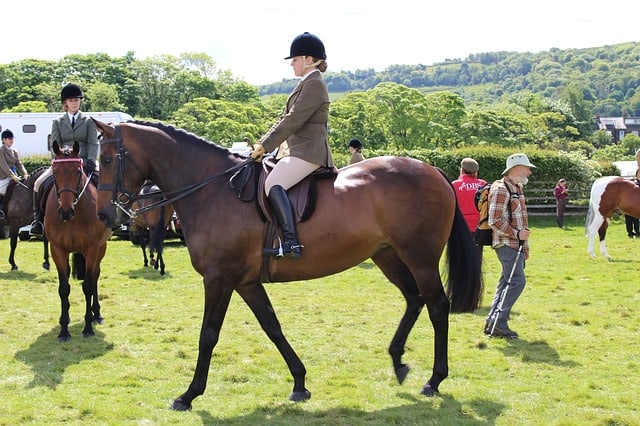
When dealing with a Novice Horse, or a Novice Rider, you will find yourself using Progressive Transitions, for example just moving from walk to trot, and trot to canter, that is you progress through the paces in steps. As both the horse and the rider, improve you can begin to include non Progressive Transitions, such as Halt to Trot, or Walk to Canter, or even Halt to Canter! The benefits of Transitions to both the balance of the Horse and Rider are huge, and getting the basics right for both, will ensure more harmonious work between horse and rider allowing them to perform with more ease.
So When do You Start Teaching Correct Transitions to the Horse.
I believe it is important to start during the Breaking Process, to work you horse toward having good transitions. I spend quite a bit of time on the lunge, so that the horse gets to know my voice, and they begin to understand the words used for Walk, Trot, Canter and Whoa. By spending time at this stage, I find that the horse becomes very responsive to my voice and the tone that I use, for example upward transitions I use a crisp Trot with a higher pitch to my voice, while for a downward transition I lower the tone of my voice and draw the word out a little, such as waaalk. I focus on Positive Reinforcement, and aim to ignore when the horse gets things wrong, and just simply rinse and repeat until they get the idea, with plenty of praise when a transition is performed correctly.
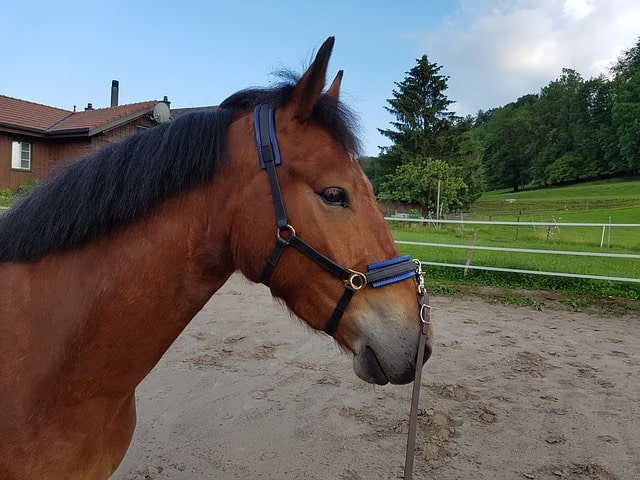
Equally for the rider it is always best to start as you mean to go on, and really work on your transitions when you are a beginner, and even more so as you progress. As we become better riders, doing more complex movements with our horse, we often forget the importance of simple correct transitions and what they can do not only for our riding but for the balance and engagement of our horses.
Once the horse is under saddle, I will continue to use my voice accompanied by my leg aids in the early days. By doing this the horse will quickly get the idea of what is required of them, as they are already very responsive to voice aids from the Lunge Work. Make those early days varied with lots of simple transitions and lots of praise.
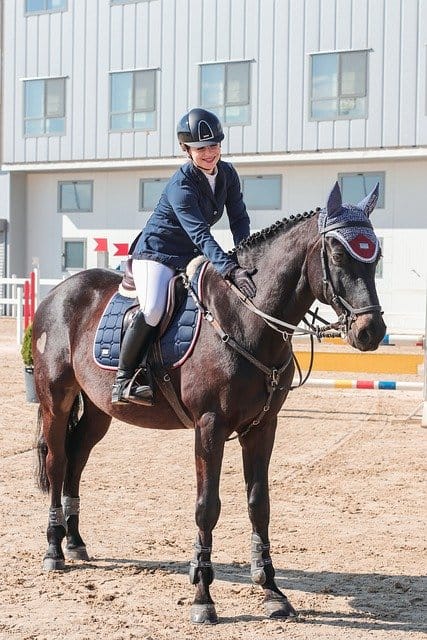
Developing Transitions.
The Key to Terrific Transitions is Preparation, making sure you prepare the horse, so that he/she is ready for your request.
The Upward Transition
For example the upward Transition is normally done by sitting in the saddle prior to the Transition, if you are moving up a pace, you shorten your rein a little to anticipate the shortening of the horses neck as they move up a pace. Remember to keep your seat light, and apply the leg aid gently but firmly. Don’t jam your leg aid on, once the horse has answered your question, your leg maintains gentle contact with the horse but is not tight.
Aim to keep your seat, light and supple during transitions, normally sitting in the trot for a couple of strides when you have moved up from walk, before going rising, and again sitting prior to the upward transition to canter. If you are not very good at sitting trot, this can be easily remedied by incorporating as much of it as you can during your training. Start with small pieces of sitting trot throughout your session, increasing the amount as both you and your horse become more comfortable. If you are still struggling with the sitting trot, there is always a lunge lesson with your favourite instructor. Becoming more comfortable and flexible in the sitting trot with pay dividends to your riding, it is a skill worth mastering.
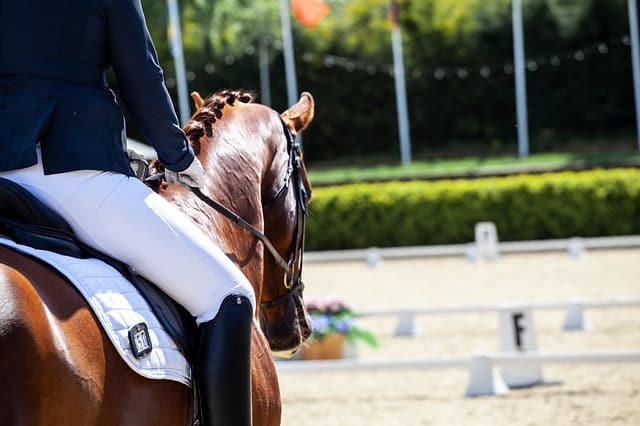
For the Upward Transitions, I normally use the corners in the early stages as the horse comes out of the corner, his hind leg tends to be more engaged, and therefore this will lead to a smoother transition when training the young horse. As you progress, you can perform transitions anywhere, just remember Preparation is Key.
The Downward Transition.
For Downward Transitions, you will sit a little deeper in the saddle, using your seat aids to indicate to the horse, that you are preparing to slow down. When teaching the young horse, remember to utilise the corner, as the horse will naturally slow when approaching the corner. Remember your seat is normally flexible and moving with the horse, so for the downward transition you will gently brace your seat against the movement signalling to the horse that you want to move down a gear, gently closing your fingers on the reins. As soon as the horse moves down to trot or walk, soften your seat and hand and apply your leg aid to keep the momentum going forwards. Remember practice makes perfect, and lots of praise when you get it right.
Progressive & Non Progressive Transitions.
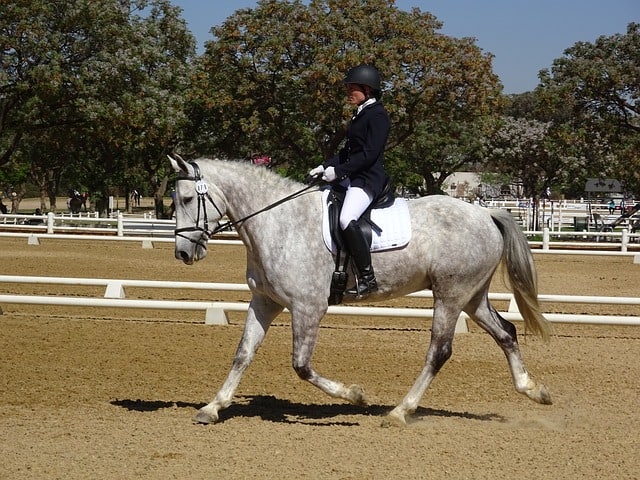
In the beginning when you are perfecting your transitions with your horse, you will initially work on progressive, i.e. halt to walk, walk to trot and so on. As you and your horse become more supple and balanced, you can work on non progressive transitions i.e. halt to trot and walk to canter and so on. Non progressive transitions, both upward and downward are a great way of improving your horse’s balance and engagement, and also of testing their obedience and progress in their training.
The Half Halt.
The Half Halt is such an important tool in the Equestrian’s Toolbox. It is used to prepare the horse for what is to be asked of him/her, and also to improve engagement of the hind leg and a lightening of the forehand.
What does a half halt involve? Well basically you apply the aids for a halt, but when you feel your horse start to sit back and engage more in preparation for the downward transition, you apply your lower leg and ask them to step under and move forward, i.e. engage more from behind.
The mistake that many riders make with the half halt is that they hang on to it. A true half halt is asked and then released and repeated until the horse responds. This means you may give quite a few in the beginning until the horse gets the hang of it. Remember Positive reinforcement in my opinion, is the key when training horses, so when your horse responds, reward with a pat or gentle encouragement from your voice.
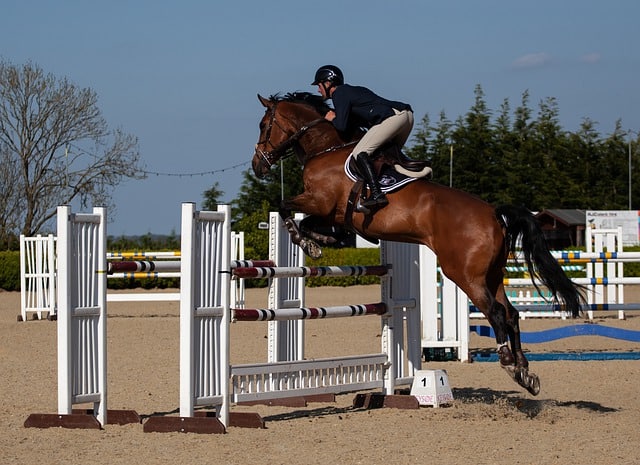
In conclusion,
Transitions are an important part of your toolbox as a rider, working diligently on the basics, will mean a smoother ride for both you and your horse, whether that be a smooth transition to a Medium Canter when tackling the Water fence, or when coming back from a Medium Canter to a Collected Canter in a Dressage Test just before performing a Canter Piourette. Transitions provide you with a well oiled gear box, so that when asked to perform your horse is well prepared and on the button.
This Article was originally published in the February 2021 Issue of Irish Sport Horse Magazine.
